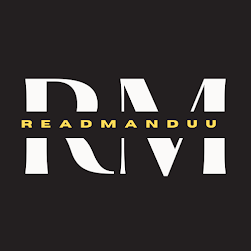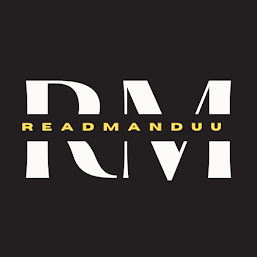Accidental Death and Dismemberment Insurance (AD&D insurance) plays a distinct role in financial protection strategies across the United States. It is often misunderstood, both as a supplement to life insurance and as a safeguard against severe accidental injury. This detailed guide provides an authoritative and fully structured view of AD&D insurance, including how it functions, what it covers, policy considerations, regulatory context, and methods for evaluating whether it aligns with personal risk management objectives.
The objective of this article is to deliver professional, accurate, and search-optimized content reflecting authoritative industry knowledge and best practices for consumer guidance.
Understanding AD&D Insurance
Definition and Core Purpose
Accidental Death and Dismemberment Insurance is a form of limited benefit insurance designed to pay financial compensation in the event of an accidental death or qualifying accidental injury. It is distinct from traditional life insurance because it only triggers benefits when specific accidental circumstances occur. Its intention is to mitigate financial burdens that arise when severe injuries impair an individual’s ability to work or when an unexpected accident results in loss of life.
Where AD&D Fits into Risk Management
AD&D insurance does not replace life insurance, disability income insurance, or health insurance. Instead, it functions as a supplementary product that provides targeted protection against accidental risks that can have long-term financial consequences. Many employers offer AD&D insurance as part of voluntary benefits packages, making the coverage accessible to a broad portion of working Americans.
How AD&D Insurance Works
Benefit Model and Claim Eligibility
AD&D coverage is structured around measurable outcomes. The policy defines clear qualifying events, generally categorized into:
-
Accidental death resulting from an external, unintentional, sudden event
-
Accidental dismemberment or loss of specific bodily functions such as:
-
Loss of limb(s)
-
Loss of vision, hearing, or speech
-
Paralysis
-
Severe burns
-
Benefits are typically paid as a lump sum. In the case of dismemberment, payout is based on a predetermined schedule of losses that assigns a percentage of the total benefit amount to each type of injury.
Example of a Benefit Schedule Structure
| Condition | Example Payout Percentages |
|---|---|
| Accidental death | 100% |
| Loss of both hands, both feet, or sight in both eyes | 100% |
| Loss of one limb or sight in one eye | 50% |
| Partial loss of limb or digit | Varies, often 25% or less |
The precise schedule varies across insurance carriers and must be evaluated in detail before purchase.
Waiting Periods and Deadlines
Most AD&D claims require the accidental event to be the direct cause of death or dismemberment and that the outcome occurs within a defined time limit, often 90–365 days from the accident. Documentation such as medical reports and accident investigations is typically required.
Key Coverage Areas
Accidental Death Coverage
Accidental death benefits apply when fatality results from unavoidable and unexpected injuries. Common qualifying events include:
-
Motor vehicle collisions
-
Workplace machinery accidents
-
Accidental falls
-
Drowning or electrocution
The benefit provides financial support to designated beneficiaries who may be managing funeral expenses, outstanding obligations, or ongoing household financial needs.
Dismemberment and Severe Injury Coverage
Severe injuries can financially disrupt households for many years. AD&D helps offset consequences such as medical bills, assistive equipment, and caregiving support requirements. Covered injuries usually include:
-
Total or partial limb amputation
-
Quadriplegia, paraplegia, or hemiplegia
-
Loss of major senses: sight, speech, or hearing
-
Severe accidental disfigurement
AD&D may serve as a form of capital infusion when a worker faces permanent functional impairment impacting earning power.
Common Exclusions and Limitations
Non-covered Causes of Loss
A defining characteristic of AD&D is its specificity. Many circumstances that result in death or disability in the United States are not covered. Exclusions typically include:
-
Death or injury due to illness or medical conditions
-
Drug misuse, intoxication, or alcohol-related incidents
-
Participation in extreme sports or high-risk recreational activities without additional riders
-
War-related incidents
-
Suicide or self-inflicted harm
-
Piloting or crew membership on non-commercial aircraft
Because exclusions vary by insurer, policyholders must conduct a comprehensive document review before purchase.
Ambiguity in Defining an Accident
Insurers may investigate whether a contributing health condition, such as a heart attack, undermines the classification of an event as accidental. Disputes can arise when causality is unclear. Understanding claims adjudication standards is essential for consumer protection.
AD&D Insurance vs. Traditional Life Insurance
| Feature | AD&D Insurance | Traditional Life Insurance |
|---|---|---|
| Qualifying event | Accidental causes only | Any covered cause of death (natural or accidental) |
| Benefit trigger | Injury or death | Death only |
| Function | Supplemental protection | Primary family financial protection |
| Cost | Lower premiums | Higher premiums |
| Injury coverage | Yes | No |
Appropriate Policy Pairing
Financial professionals frequently recommend AD&D as an adjunct to life insurance. Individuals who rely solely on AD&D may leave beneficiaries financially exposed if death results from medical conditions, the most common cause of mortality in the United States.
Cost Structure and Pricing Factors
Low Relative Premium Costs
Premiums for AD&D insurance remain comparatively affordable because statistically, accidental deaths are far less common than illness-related fatalities. Pricing may vary by:
-
Coverage amount selected (e.g., $50,000 to $1,000,000)
-
Occupational risk level
-
Higher premiums apply to workers in construction, manufacturing, logistics, or public safety roles
-
-
Age of insured
-
Younger adults generally receive lower premiums
-
Employer-sponsored group coverage often provides the most cost-efficient access.
Stand-Alone vs. Group Products
Employees may obtain:
-
Employer-paid basic AD&D, automatically included in benefits
-
Voluntary AD&D, elected during enrollment as supplemental coverage
-
Individual AD&D, purchased privately from insurers
Personal underwriting is usually limited, improving accessibility for individuals who may not qualify for traditional life insurance at competitive rates.
Regulatory Considerations in the United States
AD&D policies are regulated primarily at the state insurance regulatory level. Although standards differ by jurisdiction, several common consumer protections apply:
-
Mandatory disclosures for benefit schedules and exclusions
-
Defined grace periods for premium payment
-
Standards for claims processing timelines
-
Right to appeal claim denials through regulatory agencies
Consumers who encounter challenges in claims adjudication often engage state insurance departments for support.
Who Should Consider AD&D Insurance
High-Risk Workers
Individuals employed in hazardous environments can significantly benefit from AD&D, including:
-
Construction trades
-
Law enforcement and firefighting
-
Manufacturing and heavy industrial operations
-
Commercial transportation
-
Forestry, energy, and agriculture
Occupational safety protocols reduce risk exposure, but accidents remain a leading hazard for these roles.
Primary Earners with Dependents
Even short-term or partial disability can disrupt financial stability for families dependent on a single income. AD&D ensures swift access to capital in these circumstances.
Young Adults and Early-Career Professionals
Younger individuals often face tighter budgets and are attracted to cost-effective risk protection. AD&D coverage provides foundational emergency protection while broader insurance portfolios evolve over time.
Individuals Lacking Full Life Insurance or Disability Coverage
AD&D should not replace comprehensive protection, although it may serve an important function when permanent disability or critical illness policies are financially inaccessible.
How to Choose an AD&D Policy
Key Evaluation Criteria
Prospective policyholders should analyze:
-
Coverage clarity
-
Well-defined accidental causes and outcomes
-
-
Comprehensiveness of the schedule of losses
-
Transparent and detailed specification of benefit percentages
-
-
Alignment with occupational and lifestyle risks
-
Riders for aviation, travel, or hazardous recreational activities if relevant
-
-
Claim support and documentation requirements
-
Responsiveness and history of fair adjudication
-
-
Integration with other benefits
-
Coordination of coverage limits with life and disability insurance
-
Customization Through Riders
Optional riders may enhance protection:
-
Air travel accident coverage
-
Seat belt and airbag benefits
-
Child education or spouse support benefits following accidental death
-
Hospital confinement indemnity for accidental injury
These additions improve coverage applicability across diverse life situations.
Understanding the Claims Process
Procedural Overview
When filing a claim, beneficiaries or insured individuals must generally provide:
-
Proof of loss documents
-
Law enforcement or accident reports
-
Medical treatment documentation
-
Death certificate when applicable
Carriers evaluate whether the accident falls within policy specification and whether exclusions apply. Typical decisions occur within 30–60 days, though complex investigations may extend this timeline.
Dispute Resolution
If a claim is denied, appeal protocols are mandated. Individuals can:
-
Request a detailed explanation of the denial rationale
-
Submit additional documentation or physician opinions
-
Escalate the issue to a state insurance regulator if warranted
Legal counsel may be appropriate for disputes involving substantial claims.
Advantages and Limitations of AD&D Insurance
Benefits
-
Affordable premiums relative to coverage amount
-
Financial support for severe disabling injuries
-
Useful complement to existing insurance products
-
Accessible for individuals with limited life insurance eligibility
Challenges
-
Narrow coverage eligibility
-
High reliance on explicit accident definitions
-
Claim disputes when medical conditions contribute to injury outcomes
-
Does not provide income replacement unless integrated with other coverages
A balanced assessment is critical to avoid coverage misunderstandings.
Complementary Protection Strategies
Life Insurance as an Essential Foundation
Traditional life insurance remains the primary instrument for the majority of family protection needs. It addresses causes of death excluded under AD&D, such as cancer and heart disease.
Disability Income Insurance
Loss of earnings capacity due to illness or accident is financially devastating for many households. Disability coverage ensures an ongoing income rather than a one-time payout.
Workers’ Compensation
Employees injured during employment may qualify for medical and wage-replacement benefits. However, coverage is restricted to incidents directly related to work duties and does not extend to off-the-job accidents.
Comprehensive Insurance Planning
A fully protected individual often holds:
-
Life insurance
-
Disability income insurance
-
Health insurance
-
AD&D insurance for supplemental support
Financial advisors regularly incorporate AD&D into layered defense strategies against unexpected risk events.
Case Examples Illustrating AD&D Application
Although generalized for confidentiality, the following conceptual scenarios demonstrate AD&D’s role:
Scenario 1: Employee Injury with Partial Dismemberment
A manufacturing worker suffers loss of fingers in a machinery incident. AD&D supports the insured with a percentage-based payout covering prosthetics and rehabilitation.
Scenario 2: Transportation Fatality
A commuter involved in a fatal highway accident triggers full accidental death benefits to support a surviving family with mortgage and childcare expenses.
Scenario 3: Non-Coverage Example
A death resulting from a severe stroke while driving does not qualify because a medical condition, not the vehicle collision, is deemed the primary cause.
These examples underscore the importance of understanding policy specifications prior to purchase.
How to Evaluate Whether AD&D Insurance Is Right for You
Consumers should assess:
-
Personal exposure to accidental hazards at work and during recreation
-
Current life and disability insurance adequacy
-
Household dependency on ongoing income
-
Budgetary capacity for incremental premium costs
A formal needs analysis, sometimes performed by licensed professionals, ensures coverage aligns with financial goals and risk tolerance.
Conclusion
Accidental Death and Dismemberment Insurance is a valuable supplemental coverage tool that strengthens financial resilience against accidental risks in the United States. Although limited in scope, its affordability and defined benefit structure provide practical protection that complements life and disability insurance. Accurate interpretation of coverage terms is essential to ensure policy performance matches expectations. Individuals considering AD&D insurance should engage in careful evaluation of policy definitions, exclusions, and compatibility with broader personal and family insurance plans.
With proper integration and understanding, AD&D insurance can serve as an important protective element in a comprehensive financial risk management framework.










0 Comments
If you have any doubts please let me know.